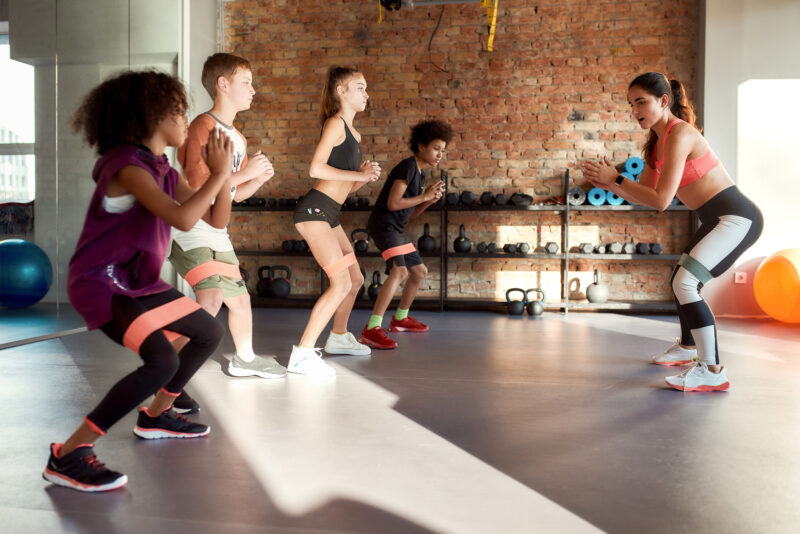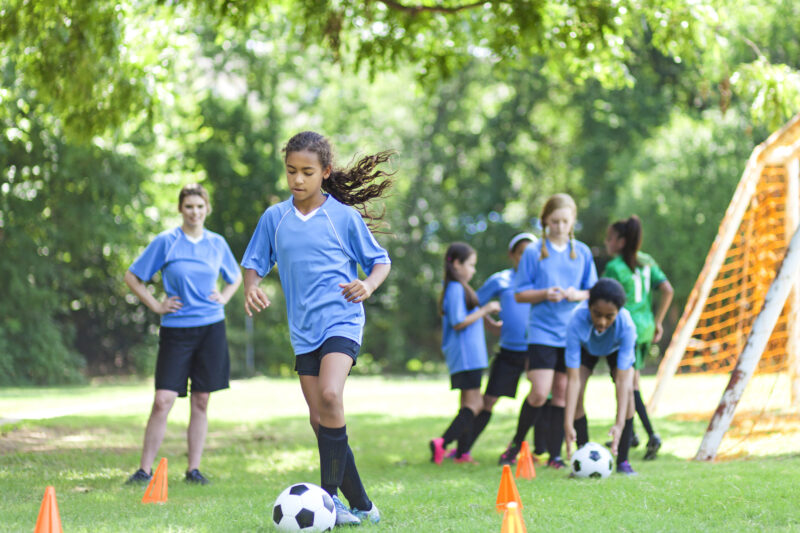
The American Academy of Pediatrics says 2 to 3 days per week of strength training during the off season will maximize benefit while allowing adequate recovery time.
With school wrapping up for summer, your child’s formal sports season may be over; however, many teams choose to continue conditioning to help keep their athletes’ bodies in shape and ward off injury. Off-season strength and flexibility training can help prevent injuries during the sports season, enhance long-term health and even boost academic performance.
“It’s important for student-athletes to train in the off-season,” says Dr. Zaid Khatib, a sports medicine physician at Akron Children’s. “For adolescents, the performance benefits of working different muscle groups to improve strength and flexibility are solid. There is some limited evidence that it reduces injuries. For example, targeted strength and balance programs have been shown to reduce ACL tears in women who play soccer.”
For any athlete, proper recovery is key, and it’s important to find a balance between benefit, overuse and burnout. When it comes to weight training, Dr. Khatib cites American Academy of Pediatrics’ recommendations, and says that 2 to 3 days per week of strength training during the off season will maximize benefit while allowing adequate recovery time.
By age 7 or 8, kids are ready for strength training with supervision. Have them start out with body weight exercises (like push ups and squats) and exercise bands for resistance. When they show good balance, body control and smooth movements, weights can be introduced.
Weight lifting is safe when done properly. Most weight lifting injuries occur from loading and unloading weights, or people weight lifting on home equipment. Injuries can be avoided with proper supervision and proper techniques.

Targeted strength and balance programs have been shown to reduce ACL tears in women who play soccer.
Some parents worry that weight lifting will stunt their child’s growth. There is no evidence to support that theory, but there is evidence that weight training may improve long-term bone health.
Weight lifting should be tailored to meet goals specific to athletes and their sport, such as improving strength, power, flexibility, cardiovascular fitness and explosiveness.
“Weight lifting for a football player would be different than lifting for a cross-country runner. You have to do the right lifting for the right sport,” Dr. Khatib says. “The main thing is that it’s supervised and structured. The program should have goals.”
The American Academy of Pediatrics recommends students undergo a medical exam before starting a strength-training program. The academy also recommends:
- Children and adolescents avoid bodybuilding, power lifting and maximum-weight lifts.
- Athletes should not take performance-enhancing substances or anabolic steroids.
- Strength training should include a 10- to 15-minute warm-up and cool-down.
- A general strength training program that addresses all major muscle groups, before sport-specific areas are addressed.
- Hiring instructors or personal trainers who have certification reflecting specific qualifications in pediatric strength training.
Akron Children’s employs athletic trainers who can help your child get started on a program at these local schools.










